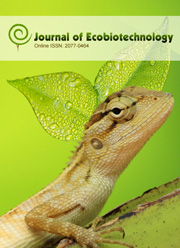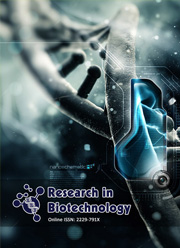Improvement of agronomicaly desirable genotypes for downy mildew disease resistance in Pearl millet [Pennisetum glaucum (L.) R. Br.] By recombination breeding
Abstract
In the present study gene action assessed by hybridizing the five female lines (one resistant and four susceptible) and eight male lines (six resistant and two susceptible) in Line x tester design was studied. The study indicated additive gene action playing predominant role in the control of yield and four yield contributing traits in addition to downy mildew resistance while fodder yield and days to 50 per cent flowering were controlled by non-additive gene effects. Among the 40 crosses, APMB 89 x APMR 70 and APMB 89 had non-significant sca and highly significant gca for yield and yield contributing traits along with downy mildew resistance and it is therefore, expected to throw superior segregants for the development of lines with desirable traits.Downloads
Download data is not yet available.
Published
01-01-2010
How to Cite
A.M. Chavan, G. S. “Improvement of Agronomicaly Desirable Genotypes for Downy Mildew Disease Resistance in Pearl Millet [Pennisetum Glaucum (L.) R. Br.] By Recombination Breeding”. Journal of Ecobiotechnology, vol. 2, no. 1, Jan. 2010, https://updatepublishing.com/journal/index.php/jebt/article/view/14.
Issue
Section
REGULAR ISSUE ARTICLES






 .
.